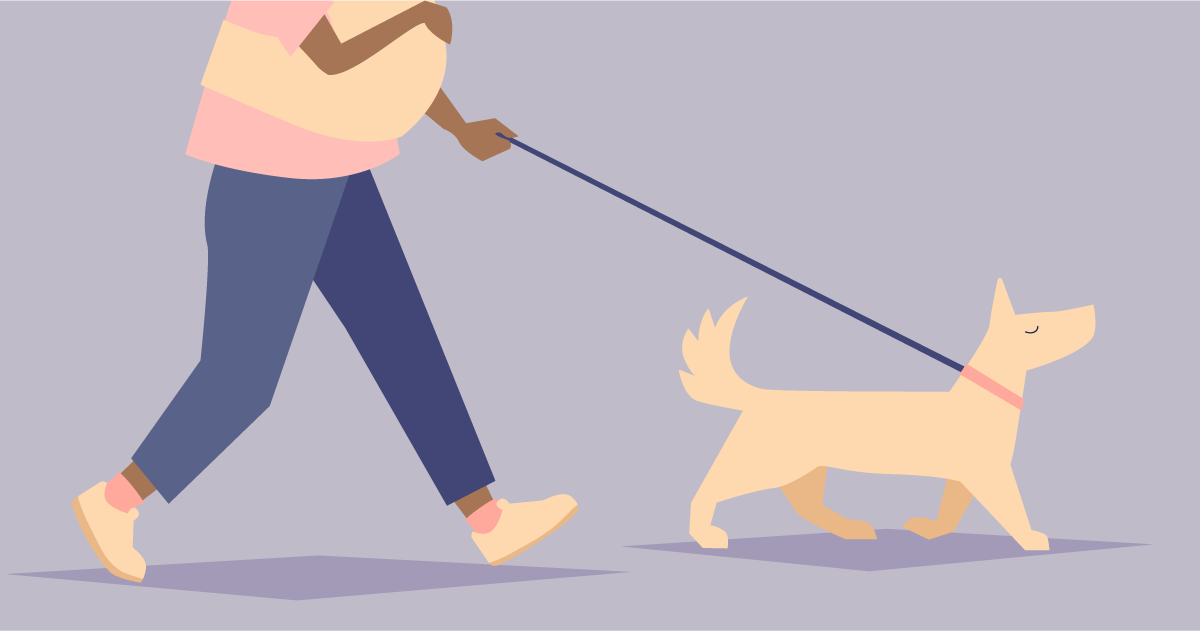
Start your preparations early
If you want your furry friend to smoothly adjust to the upcoming changes, it's all about a bit of advance planning. That way, when your new baby finally arrives, your pet won't be caught off guard.
Don't wait until your baby's already here; begin preparing around four months before the due date. By following the tips in this blog, your entire family can make the most of the joys that come with having a pet.
Before your baby is born
Handling: It's crucial that your dog is comfortable with being touched all over. Ideally, they should be relaxed and happy when touched. However, if your dog gets too excited when petted, it might be time for some gentle handling exercises when they're calm.
Sounds: To acclimate your dog to the various sounds that babies make, consider playing recordings of crying, gurgling, and even the occasional baby scream for short periods during the day. It's essential to start with the sound barely audible and then gradually increase the volume as your dog becomes accustomed to these noises. Remember, the goal is to have your dog feel calm and relaxed with these sounds before increasing the volume, so take it slow.
New smells and objects: In the weeks leading up to your baby's arrival, introduce your dog to the scents associated with babies. Use baby powder, soaps, shampoos, and baby milk at home. Additionally, make sure that baby gear like playpens, cots, pushchairs, highchairs, and changing mats are in place before the baby arrives. This will help your dog get used to these new additions to the household.
Exercise: When you're out for a walk with your dog, consider their behavior. Are they pulling on the leash, coming back when called, or showing any issues around other dogs? It's important to address any problems now, as you'll need to manage them while pushing a stroller or carrying your baby. Also, keep in mind that new mothers may experience physical discomfort after giving birth. So, you'll need to ensure that your dog is easy to control. If your dog tends to pull on the leash, consider using a harness to help prevent pulling. It's a good idea to practice walking your dog next to a stroller before your baby arrives. This can benefit both you and your dog, although your dog might be a little nervous about it initially. Using plenty of treats can help boost their confidence. Avoid tying the leash to the stroller, as this can be dangerous if your dog unexpectedly lunges.
Training: A well-trained dog is a joy to have around, especially when your baby arrives. If your dog is in need of a refresher on basic commands like coming when called and walking on a loose leash, now is the time to put in the effort. The goal is to have a well-behaved dog who can easily adapt to the new family dynamics that a baby brings. When it comes to training, always opt for kind, reward-based methods, as they are the most effective and humane.
Food: Many accidents occur when babies or toddlers approach a dog's food bowl or try to take a dog's bone or chew. To avoid such incidents, ensure that your dog can eat their dinner and other food items in peace, without any fear of being disturbed or pestered. If your dog has a habit of snatching treats, this is the right time to teach them to take treats gently from your hand. This will ensure that treat time remains safe and enjoyable for everyone.
Attention: The arrival of your new baby will undoubtedly take up a significant portion of your time. With visits from family, friends, and health visitors, it's unlikely that you'll be able to devote as much attention to your dog as before. This change can be particularly challenging for some dogs, especially if they're used to spending a lot of time with their owners. Therefore, it's a good idea to start preparing them for a new routine as early as possible. If you plan to keep your dog in a separate area when specific people visit, help your dog get used to this arrangement before your baby arrives. You can do this by placing your dog behind a stair gate, giving them a tasty chew toy to occupy them. Gradually increase the time they spend there, making it a regular part of their routine. By the time your baby arrives, they'll be accustomed to this and won't be distressed or confused when they have to be separated from you for short periods.
Toys: It's not uncommon for dog toys and baby toys to be made of similar materials, and some toys even produce similar noises, like squeaks. As a result, some dogs can become confused about which toys they're allowed to play with. To avoid this confusion, consider putting your dog's toys away after play or designating specific play areas, such as the garden or on walks. This helps your dog understand that play happens when you produce their toys and not when they find a toy in the house. It also prevents the baby from picking up the dog's toys and putting them in their mouth. When the baby arrives, it will be easier for you to teach your dog to ignore the baby's toys since they've already learned that playtime is linked to their own toys. If your dog does happen to pick up the baby's toys, refrain from becoming angry, as this can frighten them. It's far better to have taught your dog to "leave" toys before the baby's arrival using positive reward-based methods, which will prevent any confusion.
A quiet place to go: Your pet should always have a quiet, safe space they can retreat to whenever they need to rest. This will become especially important as your baby becomes more mobile. As your little one starts exploring the world around them, your dog will appreciate having their own space to relax and recharge. Teach your dog to go to a place where they feel safe and content, such as a comfortable bed in the corner of a room. An indoor kennel (also known as a cage or dog crate) can also be considered for times when your dog needs peace and quiet.
Resting and sleeping arrangements: When preparing for your baby's arrival, consider whether you want to make changes to where your dog currently rests and sleeps. For instance, if they're used to lounging on the sofa every evening and snuggling up in your bed, think about whether you're comfortable with these arrangements continuing. If you're planning to make changes, it's best to implement them well in advance, so your dog doesn't associate these alterations with the arrival of the baby.
If you do decide to alter your dog's resting spots, make sure you provide them with a comfortable alternative. It would be unrealistic to expect your dog to suddenly transition from your cozy bed to spending the night in the kitchen without any preparation. To help them adapt to the change, make gradual adjustments over time.
Health and well-being: Prior to your baby's arrival, ensure that your dog is in good physical health. Regular check-ups with a qualified veterinarian are essential. They should also be free from fleas and worms to prevent any discomfort or health issues.
Keep in mind that any pain or irritation your dog experiences can lower their tolerance level and increase the risk of aggressive behavior. For instance, if they are in pain, they may be less patient when being handled and more likely to growl, snap, or even bite. Regular veterinary care and attention to their well-being are crucial to maintaining a harmonious environment as your family expands.

